With the UConn and Purdue men queued up for 9:20 p.m. ET tonight, the TV numbers for Sunday’s women’s final between South Carolina and Iowa are in, and they’ll melt your mind. (Or, maybe they won’t—this has long been coming.) … Transfer season extends to the coaches as Kentucky’s longtime leader follows the chicken money. (We’ll explain.) … The men’s Final Four, where all the big things happen, is noticeably quiet when it comes to talking about all the big things. … Plus: More on a new collectibles website, another Everton points deduction, women’s basketball “units,” and the purported perils of the pitch clock.
—Eric Fisher, Amanda Christovich, Michael McCarthy, and Margaret Fleming
|
|
|
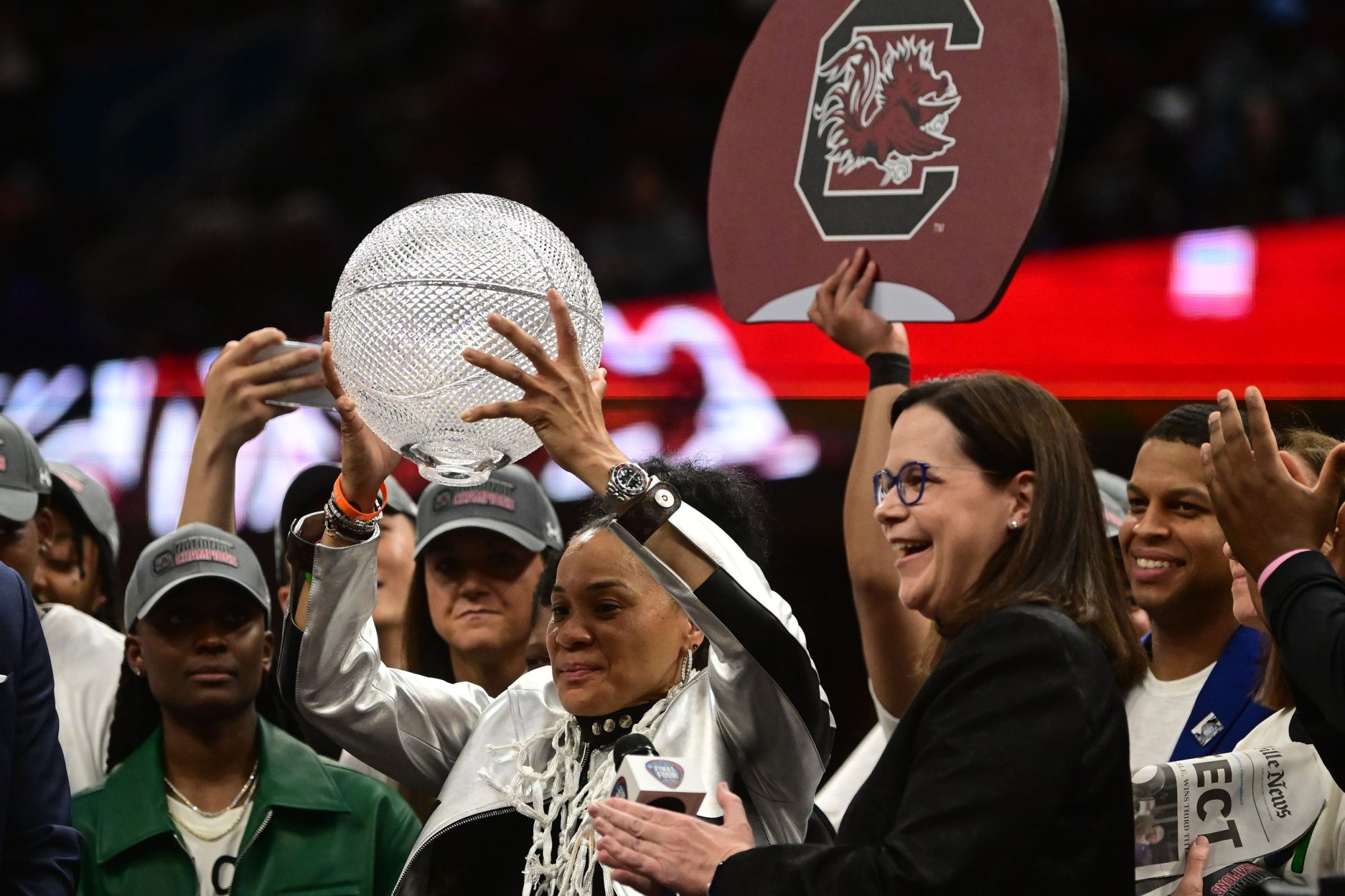
|
As the final seconds ticked off in South Carolina’s victory over Iowa, ESPN’s Ryan Ruocco exclaimed, “Perfection with a touch of sweet redemption.”
The line was a chef’s kiss in several ways. Ruocco was celebrating South Carolina exacting revenge for its Final Four loss to Caitlin Clark and Iowa last year, as well as the team’s perfect, undefeated season. But the play-by-play announcer was also saluting the sweet redemption of women’s college basketball finally reaching, and likely surpassing, men’s college hoops.
ABC/ESPN’s telecast of South Carolina’s thrilling 87–75 win over Iowa averaged 18.7 million viewers, ESPN said on Monday. The network said it was the most watched basketball game since 2019, beating the ratings for every sporting event outside of football and the Olympics in that period. It came up just short of the the 19.5 million who watched NBC’s broadcast of the U.S. vs. Brazil gold medal game at the 1996 Atlanta Olympics. Current South Carolina head coach Dawn Staley was part of that gold-medal-winning American squad.
Viewership peaked at 24 million viewers, the network said. It smashed the previous women’s college basketball record, set just Friday night, and nearly doubled last year’s Iowa-LSU title game.
That figure for Iowa–South Carolina may outdraw viewership for Monday night’s men’s final between UConn vs. Purdue tonight on TBS/TNT/truTV, said sports ratings expert Doug Pucci. He forecasts 17 million to 18 million viewers for the matchup between the two men’s college hoops powerhouses. Last year, viewership for UConn–San Diego State fell to 14.69 million viewers on CBS, making it the least-watched men’s NCAA final on record. “Connecticut–Purdue will do good for TBS, TNT, and truTV, but it won’t top [Iowa–South Carolina],” Pucci tells Front Office Sports.
The saying in golf is Tiger Woods doesn’t move the TV needle; he is the needle. And so is Clark. The so-called “Caitlin Clark effect” got bigger every game, breaking one TV record after another. In 2023, Clark and Iowa’s championship loss to Angel Reese and LSU drew a then record 9.9 million viewers. The wave crested during ESPN’s exclusive coverage of this year’s March Madness. Along the way, women’s college hoops got its due:
-
- During a Sweet 16 matchup against Colorado, Clark and Iowa drew an impressive 6.9 million viewers. That set the table for three straight record-breaking TV performances.
-
- Clark and Iowa’s revenge win over Reese and LSU in the Elite Eight last Monday set a new all-time high for women’s college basketball viewership, with 12.3 million viewers.
-
- That record was smashed only four days later as Clark and Iowa’s Final Four win over Paige Bueckers and UConn pulled 14.2 million viewers.
-
- Despite an early 3 p.m. ET tip time on ABC, Sunday’s Iowa–South Carolina grudge match lived up to its billing. With Clark scoring 18 points in the first quarter, Iowa raced out to an early lead. But South Carolina’s defense and rebounding wore Iowa down, producing Staley’s third title in the last eight years.
There have been other sports stars who drove TV ratings before fading quickly, like Deion Sanders and Colorado last fall or Jeremy Lin’s “Linsanity” with the New York Knicks in 2012. But Clark looks like a keeper. Look for her to supercharge the WNBA’s viewership after becoming the certain No. 1 pick at the league’s draft April 15. The WNBA averaged 505,000 viewers across ABC, CBS, ESPN, and ESPN2 during the ’23 season, up 21% from the year before. With Clark dropping three-point bombs for the Indiana Fever, that number will almost certainly jump up.
The NFL dominates TV viewership in this country, setting a new record for any U.S. broadcast with its latest Super Bowl bringing in an average of 123.4 million viewers in February. But outside of the NFL, Sunday’s title game outperformed nearly all major sports telecasts from 2023.
Among the tentpole events in 2023 that Iowa-USC outdrew, listed by average audience according to Sports Media Watch:
-
- Alabama-Georgia (SEC title game), CBS, Dec. 2: 17.52 million
-
- Georgia-TCU (CFB nat’l championship), ESPN/ESPN2/ESPNU, Jan. 8: 17.22 million
-
- UConn–San Diego State (MBB nat’l championship), CBS, April 3: 14.69 million
-
- Kentucky Derby, NBC, May 7: 14.44 million
-
- Nuggets-Heat (NBA Finals, Game 5), ABC/ESPN2, June 12: 13.08 million
-
- The Masters (final round), CBS, April 9: 12.06 million
-
- Rangers-Diamondbacks (World Series, Game 5), Fox, Nov. 1: 11.48 million
-
- LSU-Iowa (WBB nat’l championship), ABC/ESPN2, April 2: 9.92 million
-
- Daytona 500, Fox, Feb. 19: 8.17 million
-
- U.S.-Netherlands (Women’s World Cup), Fox/Telemundo, July 26: 7.59 million
-
- Coco Gauff–Aryna Sabalenka (US Open final), ESPN, Sept. 9: 3.42 million
-
- Panthers-Bruins (Stanley Cup playoffs, Round 1, Game 7), TNT, April 30: 3.10 million
|
|
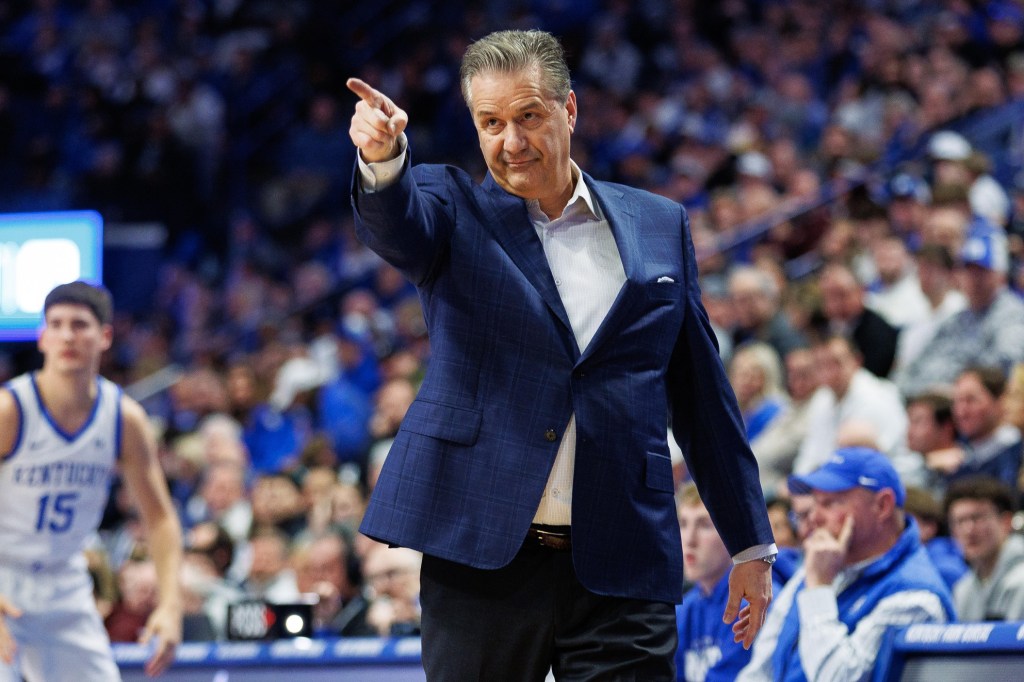
|
Jordan Prather-USA TODAY Sports
|
For some time, John Calipari (above) was one of the most prominent voices lamenting the fast-changing state of college basketball. Now he’s becoming a poster child for how the sport operates in the name, image, and likeness era.
Calipari is poised to leave Kentucky after 15 years to become the coach at Arkansas, where he will seek to revive a program that won a national title 30 years ago and reached the Elite Eight in both 2021 and ’22 but this season sank to 11th place in the conference, with a losing record.
At Kentucky, Calipari grew increasingly vocal about how old college basketball became in the more transactional and transfer-laden NIL era, contrasting strongly with his own legendary prowess in traditional recruiting and his heavy reliance on freshmen and sophomores.
But with the Razorbacks, Calipari’s own deal was developed with the aid of chicken magnate and billionaire John H. Tyson, a significant backer of Arkansas sports. According to multiple reports, Calipari will also now have an NIL budget of more than $5 million per year, ranking among the best in college basketball.
Tyson, whose family is estimated to be worth $2.8 billion, is part of the namesake Tyson Foods, which was founded by John H.’s grandfather, John W., and the family name is on Arkansas’s indoor track facility. (Other prominent backers of Razorbacks athletics program include Dallas Cowboys owner Jerry Jones, and the Walton family, which built the Walmart empire.)
Even before the Calipari deal began to materialize, Arkansas boosters grew more serious about participating actively in the emerging NIL landscape. Arkansas Edge, the official NIL collective for the Razorbacks’ athletic program, formed last fall and is now in the midst of a supplemental membership drive.
On Monday afternoon, Kentucky freshman Aaron Bradshaw, a former McDonald’s All-American, became the first Wildcat to enter the transfer portal since talk started about Calipari’s imminent departure.
|
|
|
|
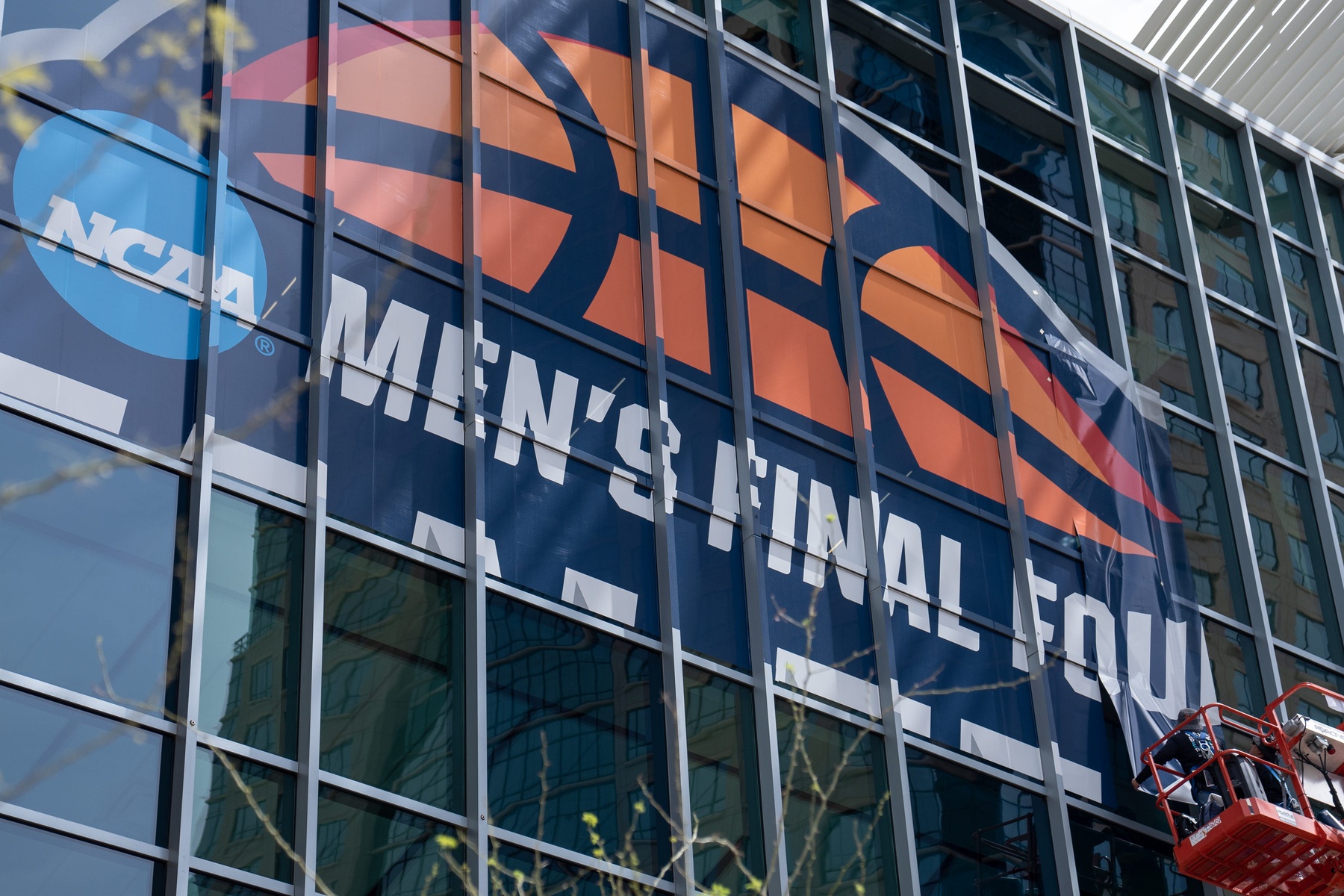
|
Amateurism, or at least the NCAA’s version of it, is doomed. Between several federal court and National Labor Relations Board cases, the NCAA could be anywhere between one and five years away from its business model being completely struck down, with athletes being deemed employees with the right to unionize.
But at this year’s men’s Final Four in Phoenix, the conversations about college sports’ existential crisis have amounted to little more than a whisper. This weekend, there were only two publicly announced events related to it, and neither of them received major fanfare. Coaches chatted about the prospect of employment, but there were no official proposals addressed, one source tells Front Office Sports.
That’s surprising, given that the event is much more than just a three-game slate and a set of fan activities. It’s also a giant hub of conferences, business meetings, parties, and general schmoozing for the multibillion-dollar college basketball industry. There’s networking at dinners and parties, commissioners flying back and forth between the men’s and women’s tournaments, a major coaching convention, and broadcast executives from top networks taking meetings with administrators. It’s supposed to be the place to address all the biggest issues.
Two events that did acknowledge the changes on the horizon: The Arizona State Humanities Institute presented an award to Ramogi Huma, who has been directly involved in almost every major NCAA athlete compensation reform in the past 20 years; and the National Association of Basketball Coaches hosted a convention, as it does every year at the men’s Final Four, including a conversation, led by Athletes.org’s Jim Cavale, dubbed “Now It’s Legal: The True Value of Student-Athletes and The Impending Reality of Player Compensation.”
Cavale agrees that, by and large, there is very little conversation happening about the potential death of amateurism. And he blames the lawyers.
“It’s interesting how much liability is referenced by college athletics leaders when you bring up topics like employment or unemployment, and you bring up topics like revenue sharing, and you bring up topics like athletes organizing,” Cavale says. “There’s a lot of sensitivity in public forums, especially by college athletics leaders, because of the ‘risk’ they have in talking about these things and how even things they say in a private conversation could be used in a deposition.”
In other words, general counsels at universities have warned athletic departments against saying anything about enhanced athlete compensation, employment, or unionization, because those comments could be used against them in one of many ongoing legal battles threatening amateurism.
The risk is very real: NCAA president Charlie Baker’s “Project DI” proposal, which suggests revenue sharing for certain athletes, has already been used against the governing body in federal litigation at the NLRB. But Cavale thinks the lack of conversation is a mistake. “That risk is not as big as not figuring out the future.”
|
|
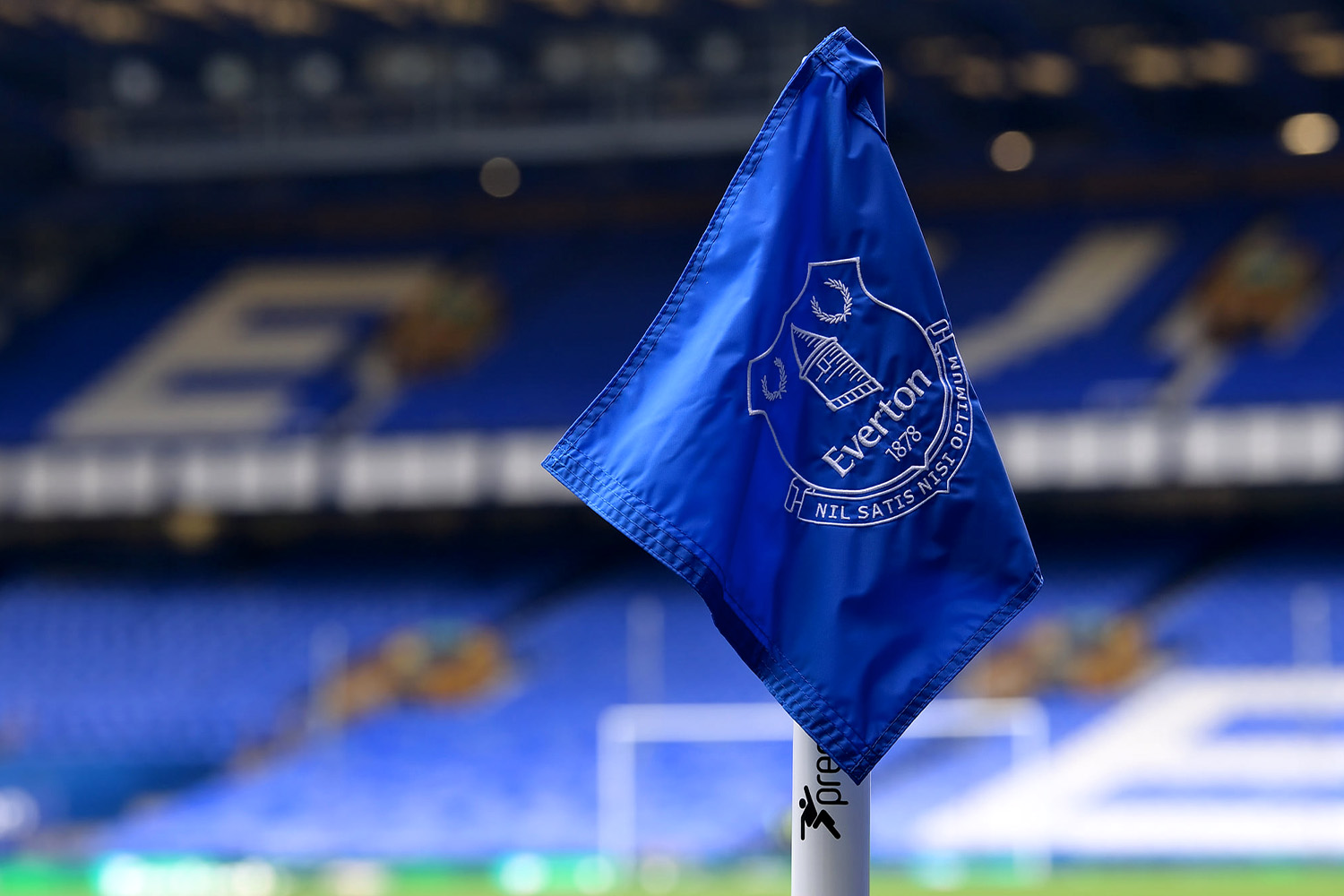
|
Collectors ⬆ Darren Rovell, formerly of ESPN, CNBC, and The Action Network (full disclosure: he’s also a Front Office Sports investor) announced Monday the launch of his next pursuit after leaving TAN: a media company, Cllct, built to cover the $500 billion collectibles industry. (Right in Cllct’s wheelhouse: A Connor McDavid game-worn jersey sold last week for $250,000—the most for a non–Wayne Gretzky sweater.) Make sure to listen to tomorrow’s episode of the Front Office Sports Today podcast, where Rovell will be a guest.
Everton ⬇ On Saturday the Toffees eked out a 1–0 win over fellow bottom-dwellers Burnley to move, it seemed, safely out of the relegation zone … only to be handed a second points deduction this season for breaking Premier League financial rules. (They were earlier dinged a separate 10 points, but that was reduced to six.) The penalty drops Everton to 16th place, two points from the drop zone, with seven games remaining.
Women’s college hoops ⬆ A big month just got bigger. After teasing but never committing to adding a “units” reward system to the women’s tournament, NCAA president Charlie Baker on Sunday finally told reporters that the change will arrive next year. This year only men’s basketball conferences reaped such financial rewards—$2 million per unit, based on how many of their teams make it to the NCAA tournament and how far they advance.
The pitch clock ⬇ Heralded for its shortening effect on MLB games following its arrival last year, the pitch clock is now getting some side-eye, particularly from the MLB Players Association, after several top pitchers were injured this weekend and lost for the season. The union’s executive director, Tony Clark, isn’t yet placing blame, but he wants the issue looked into, saying, “The league’s unwillingness thus far to acknowledge or study the effects of these profound changes is an unprecedented threat to our game and its most valuable asset—the players.”
|
|
- Golfers, attendees, and media members at Augusta on Monday for a Masters practice day received a novel handout to match the rarity of the day. Check it out.
- The Cubs … the women’s national championship game. … Sometimes you have to choose one. But a Wrigley Field rain delay Sunday—and a savvy game-day operations team—allowed fans of baseball and women’s hoops to multitask. Here’s what that looked like.
- When championships are won, copywriters shine. And when South Carolina offed Iowa on Sunday, Under Armour’s crack copy team was up for the task.
|
|
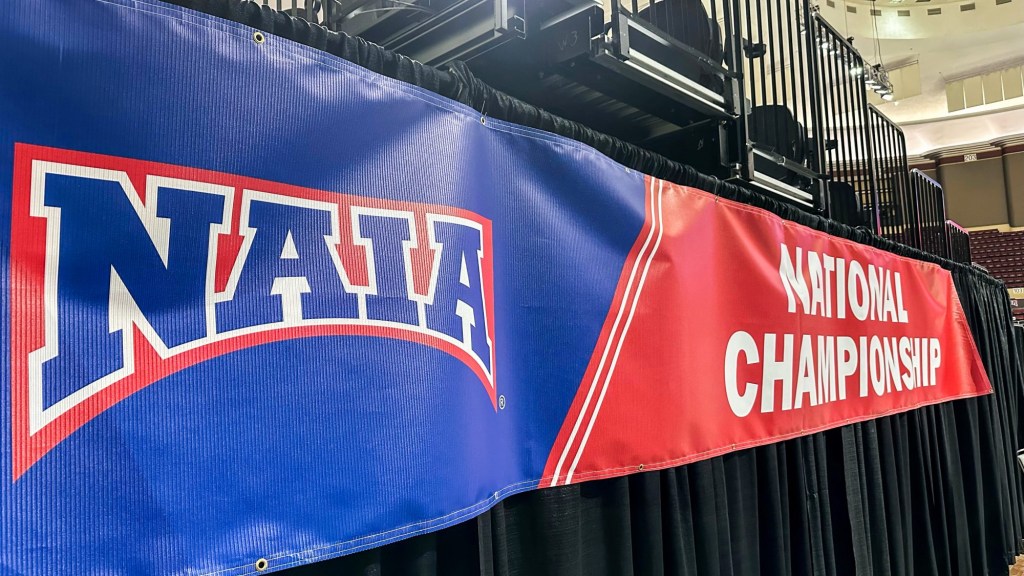 | Could the NCAA follow the NAIA in its transgender women ban? |
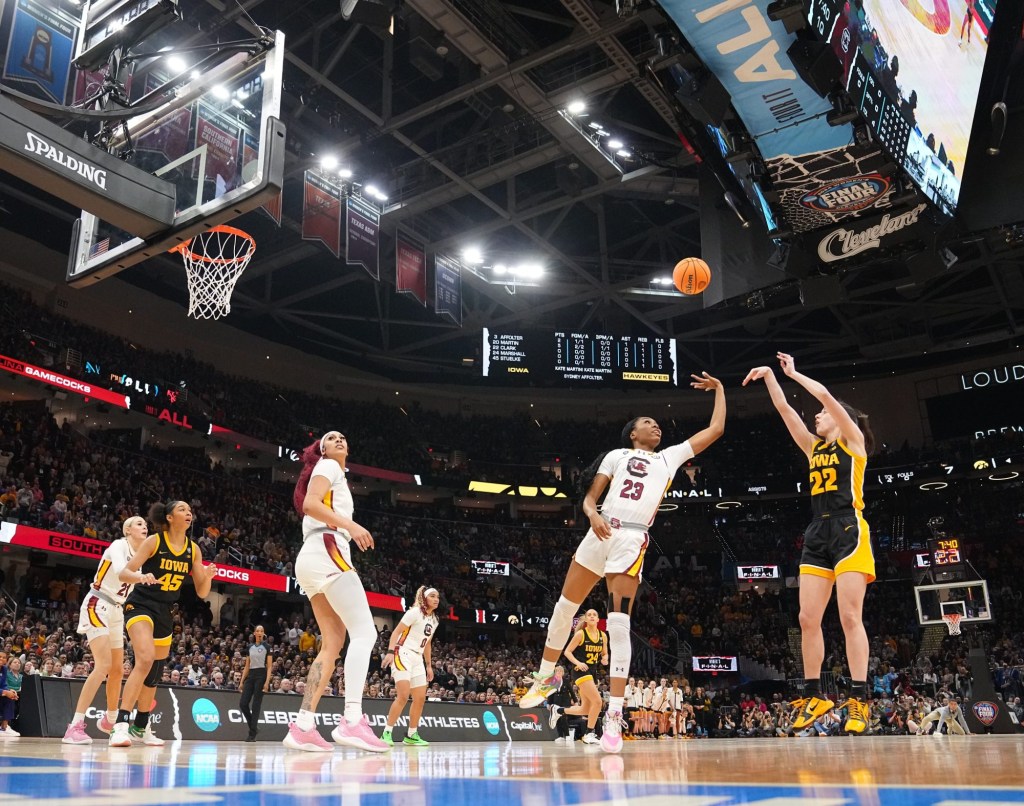 | The media-rights deal expires in 2025 to coincide with the Caitlin Clark effect. |
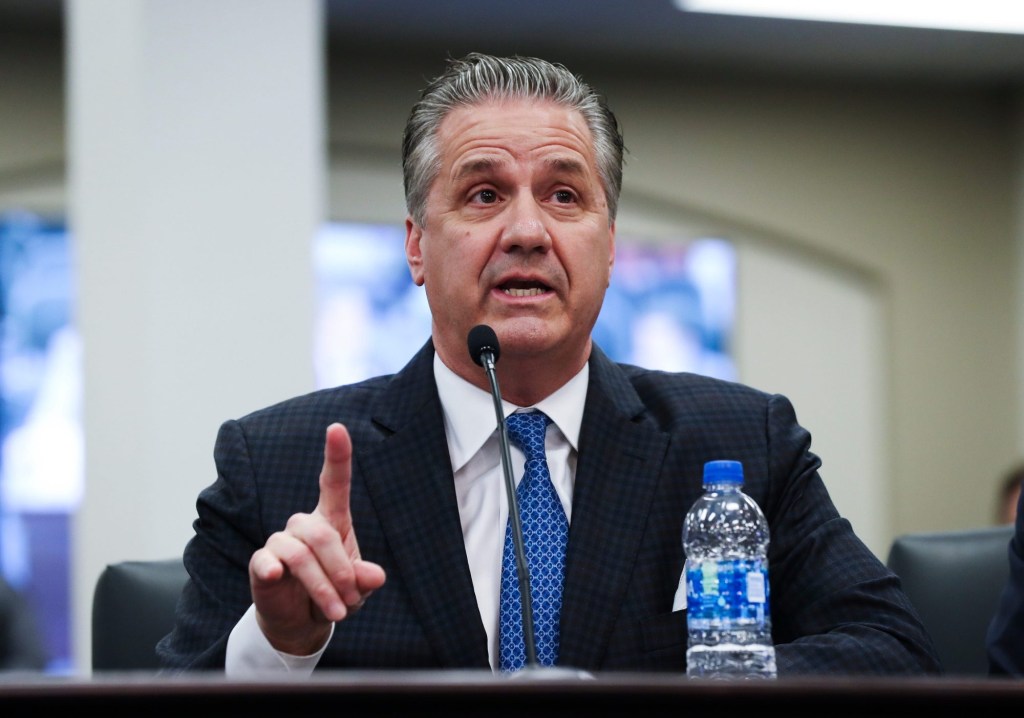 | The chicken man blew up college basketball last night. |
|
|










